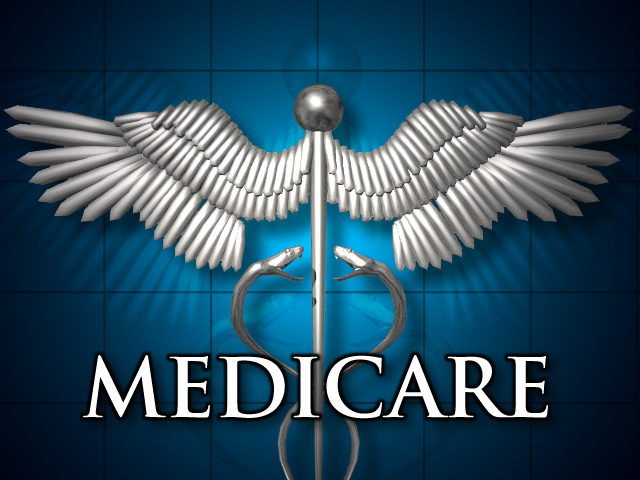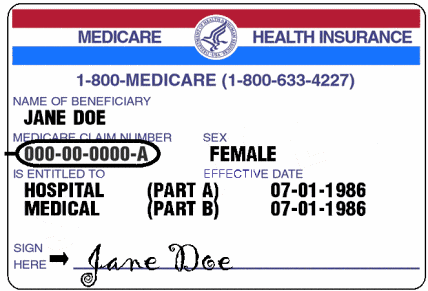About 'home health care medicare'|Home Health firms part of Medicare fraud
As long as we're questioning the astounding growth in health care costs, let's get a discussion of WHY out in front. More new drugs coming to market, all for symptom relief, virtually none for cures. Does that strike you oddly? It does me. And considering that the side effects of many of these drugs are more threatening than the underlying disease, why do we -the FDA, Congress, us as Citizens, continue to allow conditions, programs and processes that are so obviously at the expense of the American public, the health care consumers like the retired and disabled? Everybody in the health "food chain" blames the other guy; remember the old criminal defense, "SODDIT" (Some Other Dude Did IT)? When nobody takes responsibility, nothing gets done. The one "cure" that almost everybody with a vested interest seems to agree on is some version of Universal Health Care, with"Uncle" paying the bills. That won't work, just drives up costs. And we can't keep saying the government (meaning taxpayers) just has to pay for it. It is only when we get individual responsibility for health care decisions and personal responsibility that we will get the system under control. As long as somebody else pays, everybody wants a piece, and the bigger the better. Lots of people remember when "insurance" meant just that-you paid your premiums, the insurer paid the bills. What went wrong? Lots of people can add, and the cost of a family of four health premium on average is up to $8000.00 a year, in some areas and groups, up to $12,000, even more. The U.S. has the most expensive health care system in the world, yet ranks in the lower end of modern societies in Outcomes and Efficiency, as well as coverage. Who can pay these ridiculous premiums, and then have to pay deductibles and have caps on benefits even after all that? How much individual care would that $8,000 buy if consumers made the decisions? I'll bet if we gave consumers the chance it would surprise us, as long as the delivery system were structured along modern designs. Yes, the "health denial" system needs reform; yes, there is a structure which would use free market economics to control cost, while INCREASING the quality of health care and delivery. And, how about still using mostly hundred-year-old infrastructure in the health care industry, when we have a new twenty-first century capability to deliver more, for less. (If the Internet and Computer industry changed at the same rate as the medical industry, we'd still be using Abacus, sheepskins and quills) If the system were restructured, doctors might welcome Medicaid and Medicare (Universal care) patients, rather than finding ways to "beat" the system to get paid. We can do better; we must, if the system is to survive for all of us. America spends more on health care than any other country, yet ranks 12th to 15th in Quality of Care and in overall ranking. How can that make sense? Throwing more taxpayer money at the problems is just not going to work without consumer-driven reforms.There is a solution that would work, if we can get past the "whose ox is being gored" phenomenon. Here it is. First, nationalize the Health Insurance industry, or make them part of the restructuring process by integrating insurance with the health care delivery process through ownership of health care facilities. Insurers collect hundreds of Billions of dollars in premiums and huge profits for managing the claims process and making non-medical coverage decisions, some unfairly, some efficiently, if not considerately. Second, change the delivery of health Care by instituting a national system of privately-owned walk-in clinics, utilizing accepted national standards of health care, and staffed mostly by fully trained and licensed Registered and Practical nurses, along with salaried medical professionals, including an Internists or GP's, a Pediatricians, and an OB/Gyn's. These folks would be rewarded by typical private business incentives like profit sharing, bonuses and so on, based on typical health care measurement standards like outcomes, including quantitative and qualitative standards of health care. In areas where privately owned clinics do not choose to operate, and there should be few of these considering the profit potential, government-sponsored clinics with salaried professionals would practice. It is not hard to budget this approach since all the logistics are known(number of people to be served per clinic, square footage and equipment needed, minimum staffing requirements). These are NOT hospitals, but clinics who can take advantage of the volume of "customers" to achieve economies of scale. Since these clinics are the "first line" in health care, they would be the emergency centers as well, able to diagnose conditions, and forward patients to hospitals as necessary. This would be the Intake point-of-contact for indigents, immigrants and others, whose use of high-cost emergency care in place of doctors or other medical alternatives are a significant upward cost driver. This would also be a good place to initiate home country bill-back for care of illegals. No refusal of care, just a better method of delivering needed care, and a way to make someone responsible for the cost. What happens to the existing Doctor/Specialty Practice/hospital integrated system? It gets changed to accommodate the needs of twenty-first century health care business models. In the transition, the existing medical infrastructure must change to accommodate the new. There may be much crying, and gnashing to teeth, and huge lobbyist expenditures to preserve the status quo. The status quo doesn't work. Full-service hospitals would handle true emergencies like heart attacks, accidents, major incidents that require trained staff professionals to handle, and surgeries, Intensive Care, and the other things that hospitals are equipped to do. Future hospital designs and remodeling of existing facilities could incorporate the walk-in model, could even take over the walk-in model if they were properly restructured. The idea here is to lower the cost of Intake and Management through lower-cost operations and overhead, while at the same time increasing efficiency to handle the required well-person maintenance. Three. Alternatively, as noted above, existing hospitals could be formally restructured to become part of the Well Person management and Intake process. However, hospitals cannot be allowed to use their traditional, high-cost model of Operations and Administration to set rates; rates must be set on the Clinic Intake model, even if at a later stage, patients are admitted for tests, procedures and surgeries that would more likely have the higher costs associated with them. Any restructuring of health care must include bringing Dentists and Eye Care into the process. Too many people get significant medical problems through a lack of proper dental care and well-mouth management. Similarly, since we see people paying for their visits and well-care, eye examinations should be part of the Annual Checkup process, as necessary, even if eyeglasses are purchased out-of-pocket. The concept is to introduce the efficiencies of a large -scale health care business model, and the modern technologies that such a structure would virtually force into the marketplace, like computer aided procedures, even including computer-aided diagnostics. Modern medical technology applied at the Intake point of contact with the health care consumer should revolutionize the industry, to the substantial betterment of the health care consumer. (It should be noted here that one of the most talked about Cloud Computing applications includes medical devices for home use that monitor, measure and manage a consumer's everyday health care, even providing alerts when conditions warrant, like heart attacks, elderly falls, other reasons. More on this another time). If we consider that a "tiered" health care system offers real efficiency, while bringing the level and capability of resources when and as needed, we could provide more health care with less expense. At the very least, more people would get health advice and annual check-ups at overall costs that would allow more eligible people to be covered. Since the current system is forced to deal with the effects of demands of high-cost care from uninsured and under-insured consumers, the opportunity for better care, more consistently, at lesser cost, is overwhelming. The current system uses the highest cost care model, at all levels of intake, which obviously makes little sense. Even health professionals admit that taking the highest cost determinant out of the equation, the Doctor, and replacing him at the initial contact point with experienced intake practitioners like properly educated and credentialed Nurses, and technologically-enhanced diagnostic techniques,would reduce costs dramatically.The Doctor isn't sidelined, but reserved for necessary further evaluations when the intake and diagnostic process warrants.The current, practice-based medical business model, along with the unreasonable cost of using the highest cost- determination model of care- the hospital complex-can be restructured to the "best practices" medical business model, delivering better care, to more people, at lower per-patient and overall annual and continuing costs. Current health care practices, primarily the insurance costs, are in reality a "tax" on each of us, a huge tax and cost not justified by the social and economic needs for health care by American Citizens. This restructuring of the system, at the outset, would incur some expense, primarily during the transition to tiered care, and the building of the infrastructure. But, rapidly, the cost per patient and the continuing cost of care provision would decline as better health care outcomes, reduced and undiagnosed disease and well-person maintenance programs become part of the mainstream. Some back of the envelope calculations indicate that consumers could pay out-of-pocket for all normal costs like Annual Health Checkups, Over-The-Counter medicines, and most prescription medicines, as well as pay a nominal amount for Catastrophic Care Coverage, and have several thousand dollars left over. Right now, healthy people pay for sick, insured pay for uninsured, and the system doesn't work. If you believe that access to affordable health care is a Citizen's right, then the system has to be restructured. This is one way. As part of the restructuring and provisioning of care, require/suggest that EVERY person in the U.S. who is a Citizen gets an annual physical through the clinics. This process would enable early intervention when intervention-type care could be most needed, providing "well-person" health advice, looking at a person's or child's health and discerning conditions or changes that the person might not have noticed, or whom would benefit from this type of health care advice. Clinics would be the perfect place for health care counseling regarding diet, family planning, and all the things that medical professionals agree would mitigate, even help prevent, the rapidly growing numbers and kinds of conditions and diseases that are affecting our society. |
Image of home health care medicare
Related blog with home health care medicare
- hcaf.wordpress.com/Home health nurses...Association for Home Care and Hospice’s...potential threat of Medicare funding...Social Security and Medicare, said that home health care saves...
- pogoblog.typepad.com/...editor. Public Health Senate Cites Medicare Abuses by Home Health Firms John Carreyrou, The Wall...Folly: Control U.S Military's Health-Care Costs Lawrence Corb, Defense News...
- ellenreaves.wordpress.com/...Medicare Advantage Plan), you need to know what the plan limits are for home health care. Medicare is very specific about requiring that your loved one need skilled...
- thinkhomecare.wordpress.com/...and nursing homes. By preventing such institutional care, home health services save Medicare millions of dollars each year. More importantly, they enable...
- ltcipartners.typepad.com/views_on_longterm_care_fi/... a doctor and 78 home health care agencies in Texas, costing Medicare 2.3 million per month. Data... from health care reform. Although HHS never...
- medicareupdate.typepad.com/... to enroll in the Medicare program as a new provider...recertification of a plan of care is essential for the delivery of high quality home health services. CMS also...
- homecarela.wordpress.com/The Accountable Care Act is...than positive for Medicare home health providers...Chronic Disease.” Care at home is ... for Medicare and Medicaid Innovation...
- pgionfriddo.blogspot.com/...during the first half of the 20 th century, home health care nearly disappeared. According to Centers for Medicare and Medicaid (CMS) historical data , by 1960...
- cockroachcatcher.blogspot.com/... on notice: health care fraud is no .... History of Medicare fraud: 2008 : Medicare ... a $40 million home health care scheme that falsely...
- www.eurekalert.org/...implementation of the Hospital at Home model has been limited to Medicare managed care and Veterans Affairs health systems. "Presbyterian...
Home Health Care Medicare - Blog Homepage Results
Related Video with home health care medicare
home health care medicare Video 1
home health care medicare Video 2
home health care medicare Video 3




















